Themed collection Nanoscale approaches for cancer diagnosis and treatment

Editorial: Nanoscale approaches for cancer diagnosis and treatment
The papers in this special issue highlight recent advances in diverse areas of nanotechnology strategies for cancer diagnosis and therapy.
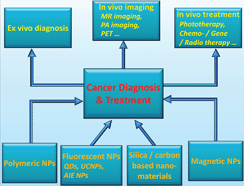
Nanoscale, 2016,8, 12391-12393
https://doi.org/10.1039/C6NR90111E
Recent advances in multifunctional silica-based hybrid nanocarriers for bioimaging and cancer therapy
In this minireview, different silica-based hybrid nanosystems and their recent applications as integrated multifunctional platforms for cancer imaging and treatment are highlighted.
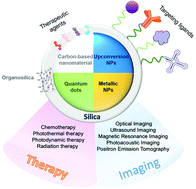
Nanoscale, 2016,8, 12510-12519
https://doi.org/10.1039/C5NR07853A
Super enhanced permeability and retention (SUPR) effects in tumors following near infrared photoimmunotherapy
SUPR effects induced by NIR-PIT promote enhanced nano-drug delivery up to 24-fold greater concentration compared with conventional EPR effects.
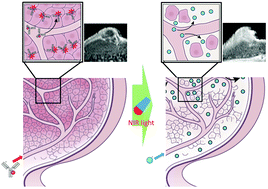
Nanoscale, 2016,8, 12504-12509
https://doi.org/10.1039/C5NR05552K
Pharmacokinetics, pharmacodynamics and toxicology of theranostic nanoparticles
Physicochemical properties of theranostic NPs are the key determinants of their clinical use.
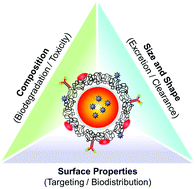
Nanoscale, 2015,7, 18848-18862
https://doi.org/10.1039/C5NR05264E
Photonanomedicine: a convergence of photodynamic therapy and nanotechnology
As clinical nanomedicine has emerged over the past two decades, phototherapeutic advancements using nanotechnology have also evolved and impacted disease management.
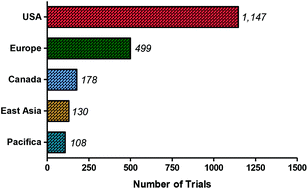
Nanoscale, 2016,8, 12471-12503
https://doi.org/10.1039/C5NR08691D
Therapeutic application of anti-angiogenic nanomaterials in cancers
This review summarizes the recent progress in anti-angiogenic therapy using various anti-angiogenic nanoparticles (NPs)/NP based drug/siRNA/peptide delivery systems for the treatment of cancers. Anti-angiogenic therapy could be useful as an alternative treatment strategy to fight against cancer in the near future.
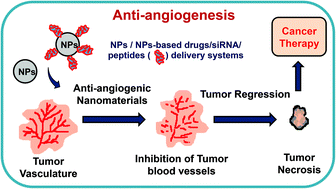
Nanoscale, 2016,8, 12444-12470
https://doi.org/10.1039/C5NR07887C
Microfluidics-mediated assembly of functional nanoparticles for cancer-related pharmaceutical applications
This review focuses on microfluidic synthesis of functional nanoparticles with tunable structures and properties for cancer treatment and diagnosis.
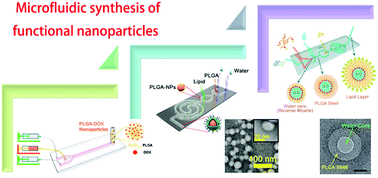
Nanoscale, 2016,8, 12430-12443
https://doi.org/10.1039/C5NR07964K
Fluorescent/magnetic micro/nano-spheres based on quantum dots and/or magnetic nanoparticles: preparation, properties, and their applications in cancer studies
Fluorescent/magnetic micro/nano-spheres based on quantum dots and/or magnetic nanoparticles for cancer research.
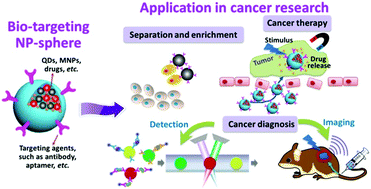
Nanoscale, 2016,8, 12406-12429
https://doi.org/10.1039/C5NR08534A
Porphyrin-loaded nanoparticles for cancer theranostics
The multifunctional nature of the porphyrin-loaded nanoparticles will play an important role in cancer theranostics for non-invasive imaging diagnosis, real-time imaging guidance and remote-controlled therapeutics, especially imaging-guided therapeutics.
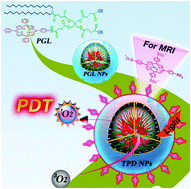
Nanoscale, 2016,8, 12394-12405
https://doi.org/10.1039/C5NR07849K
Amplified effect of surface charge on cell adhesion by nanostructures
The effect of surface charge on cell adhesion can be significantly amplified by integrating nanostructures, as revealed by cell adhesion performance, cell morphology and corresponding cytoskeletal organization.

Nanoscale, 2016,8, 12540-12543
https://doi.org/10.1039/C6NR00649C
A novel photoacoustic nanoprobe of ICG@PEG-Ag2S for atherosclerosis targeting and imaging in vivo
Atherosclerosis is a major cause of cardiovascular and cerebrovascular diseases that have high mortality and disability rates.
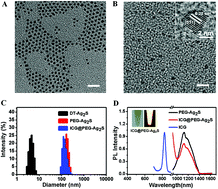
Nanoscale, 2016,8, 12531-12539
https://doi.org/10.1039/C6NR00060F
A highly fluorescent AIE-active theranostic agent with anti-tumor activity to specific cancer cells
A tetraphenylethene derivative with a structure resembling Tamoxifen is synthesized as a theranostic agent for cell imaging and anti-breast cancer therapy. Its high brightness, excellent photostability and long-term cell tracing properties enable elucidation of its working mechanism and hence provide new insights into drug development.
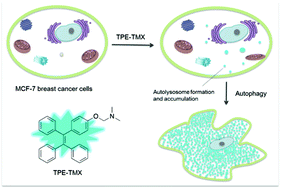
Nanoscale, 2016,8, 12520-12523
https://doi.org/10.1039/C5NR08782A
Improving nanoparticle diffusion through tumor collagen matrix by photo-thermal gold nanorods
Denaturing collagen (I) by heat can enhance the transport of nanoparticles through tumor extracellular matrix.
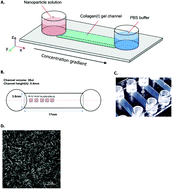
Nanoscale, 2016,8, 12524-12530
https://doi.org/10.1039/C5NR08463F
Long circulating reduced graphene oxide–iron oxide nanoparticles for efficient tumor targeting and multimodality imaging
Double PEGylated RGO-IONP exhibited ultra-long circulation half-life and high tumor accumulation for multimodality imaging.
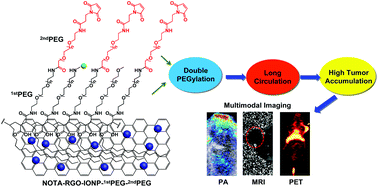
Nanoscale, 2016,8, 12683-12692
https://doi.org/10.1039/C5NR09193D
Prostate-specific membrane antigen targeted protein contrast agents for molecular imaging of prostate cancer by MRI
ProCA32.PSMA enables the molecular imaging of prostate-specific membrane antigen in tumor bearing mice using both T1 and T2-weighted MRI.
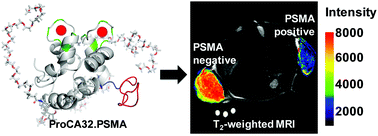
Nanoscale, 2016,8, 12668-12682
https://doi.org/10.1039/C5NR09071G
Fluorescent ampicillin analogues as multifunctional disguising agents against opsonization
A multifunctional fluorescent derivative of a beta-lactam antibiotic, ampicillin (termed iAmp) shows high promise as a biocompatible shielding agent and an effective dispersant for improving the in vivo effectiveness of theranostic nanomaterials.

Nanoscale, 2016,8, 12658-12667
https://doi.org/10.1039/C5NR08686H
A theranostic nrGO@MSN-ION nanocarrier developed to enhance the combination effect of sonodynamic therapy and ultrasound hyperthermia for treating tumor
Combination of sonodynamic/hyperthermia therapy with magnetic guidance can produce remarkable efficacious therapy in tumor growth inhibition.
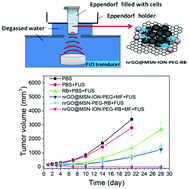
Nanoscale, 2016,8, 12648-12657
https://doi.org/10.1039/C5NR07782F
Enhanced performance of macrophage-encapsulated nanoparticle albumin-bound-paclitaxel in hypo-perfused cancer lesions
The proposed experimental/computational approach could enable prediction of nanotherapeutics performance to treat hypovascularized metastatic cancer in the liver.
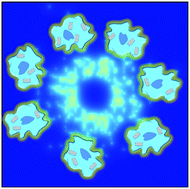
Nanoscale, 2016,8, 12544-12552
https://doi.org/10.1039/C5NR07796F
Monodispersed calcium carbonate nanoparticles modulate local pH and inhibit tumor growth in vivo
Intravenously administered CaCO3 nanoparticles can induce tumor growth inhibition via local increases in tumor extracellular pH in vivo.
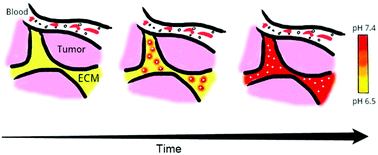
Nanoscale, 2016,8, 12639-12647
https://doi.org/10.1039/C5NR06162H
Stable J-aggregation enabled dual photoacoustic and fluorescence nanoparticles for intraoperative cancer imaging
J-aggregates display nanoscale optical properties which enable their use in fluorescence and photoacoustic imaging applications.
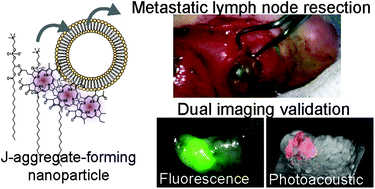
Nanoscale, 2016,8, 12618-12625
https://doi.org/10.1039/C5NR08165C
Mucin-mediated nanocarrier disassembly for triggered uptake of oligonucleotides as a delivery strategy for the potential treatment of mucosal tumours
This work demonstrates gastric mucin-triggered nanocarrier disassembly for release of antisense oligonucleotides and consequent unassisted cellular entry as a novel oral delivery strategy.
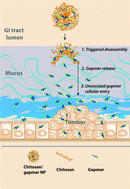
Nanoscale, 2016,8, 12599-12607
https://doi.org/10.1039/C5NR07206A
Design of antibody-functionalized carbon nanotubes filled with radioactivable metals towards a targeted anticancer therapy
SWCNTs filled with radioactivable metal halides have been covalently functionalized with an antibody targeting the epidermal growth factor receptor.
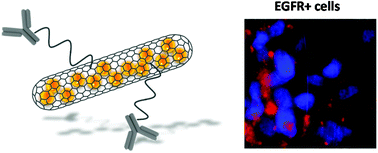
Nanoscale, 2016,8, 12626-12638
https://doi.org/10.1039/C5NR07923C
Co-delivery of doxorubicin and arsenite with reduction and pH dual-sensitive vesicle for synergistic cancer therapy
A reduction and pH dual-sensitive nanovesicle co-delivers doxorubicin and arsenite for synergistic anticancer therapy.
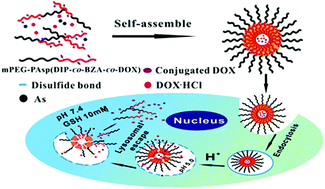
Nanoscale, 2016,8, 12608-12617
https://doi.org/10.1039/C5NR07868G
Detection of early primary colorectal cancer with upconversion luminescent NP-based molecular probes
A primary mice colorectal tumor model was established and carefully studied for achieving sensitive imaging with specific upconversion nanoprobes.
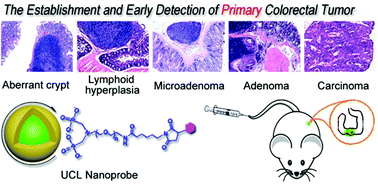
Nanoscale, 2016,8, 12579-12587
https://doi.org/10.1039/C5NR07858J
A graphitic hollow carbon nitride nanosphere as a novel photochemical internalization agent for targeted and stimuli-responsive cancer therapy
A graphitic hollow carbon nitride nanosphere is synthesized as a photosensitizer and a drug carrier for photochemical internalization mediated cancer therapy.
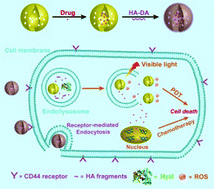
Nanoscale, 2016,8, 12570-12578
https://doi.org/10.1039/C5NR07719B
pH-Responsive biodegradable polymeric micelles with anchors to interface magnetic nanoparticles for MR imaging in detection of cerebral ischemic area
A new type of pH-responsive copolymer was developed, which was used to carry Fe3O4 nanoparticles and act as a pH-triggered contrast agent for MR imaging.
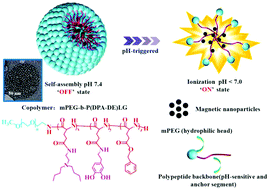
Nanoscale, 2016,8, 12588-12598
https://doi.org/10.1039/C5NR06542A
Stimuli-free programmable drug release for combination chemo-therapy
Tumor-homing and programmable drug release of all-in-one nanoparticles.
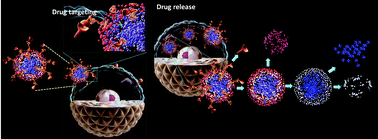
Nanoscale, 2016,8, 12553-12559
https://doi.org/10.1039/C5NR06305A
Magnetically targeted delivery of DOX loaded Cu9S5@mSiO2@Fe3O4-PEG nanocomposites for combined MR imaging and chemo/photothermal synergistic therapy
A schematic of Cu9S5@mSiO2@Fe3O4-PEG (labelled as CMF) nanocomposites for theranostic applications.
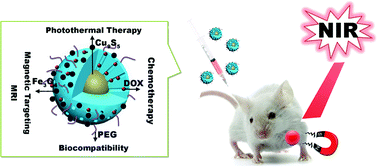
Nanoscale, 2016,8, 12560-12569
https://doi.org/10.1039/C5NR06322A
About this collection
This themed issue focuses on recent developments in nanoscience and nanotechnology for cancer research, from diagnosis, to imaging and treatment.